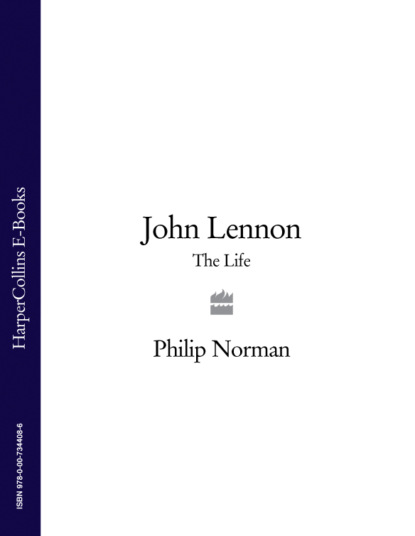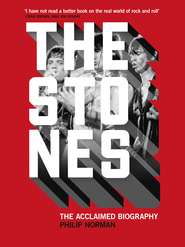По всем вопросам обращайтесь на: info@litportal.ru
(©) 2003-2024.
✖
John Lennon: The Life
Настройки чтения
Размер шрифта
Высота строк
Поля
Given their different personalities and very different levels of musical prowess, the five Hamburg Beatles shook down together remarkably well. At this point, it was hardly an issue that the lineup included John’s two closest friends, who had always pulled him in diametrically opposite directions.
Paul McCartney and Stu Sutcliffe were never going to be close, but both were civilised for their young years and thus got along tolerably enough. What chiefly concerned Paul was Stu’s commitment to the group: that he should apply himself fully to his bass playing and not distract John with impractical questions of art and aesthetics. And for a time, both those requirements seemed to be being met.
Stu saw the trip to Hamburg as a clean break from his life at art college, his home city’s predictable subject matter, and the ‘tricks’ he believed he had come to rely on in his work there. Despite the garish colours and teeming subject matter around him, he resisted all temptation to paint or draw, let alone to encourage John to do so. With the disillusionment that in youth can be actively pleasurable, he described himself as ‘a romantic gone sour…I have shrivelled like a sucked grape. I must dig deep and plant myself and grow.’
As even Paul conceded, Stu was a strong visual asset to the group, a James Dean movie in miniature, with his upswept hair and brooding shades, while the others played Groucho and Harpo. To relieve their Preludin-parched throats, he had to take a share of the vocals, doing not at all badly with slow Presley ballads like ‘Love Me Tender’. And his employer, at least, had no complaints about his playing. A few weeks after the Beatles opened at the Indra, Koschmider removed Stu from their ranks and put him into an ad hoc quartet that was to play in alternation with Derry and the Seniors at the Kaiserkeller. This hybrid group included Howie Casey, the Seniors’ much-respected sax player, who found no serious fault with Stu’s musicianship either. He thus became the first Beatle to get the gig that they all coveted.
Liverpool had not, in fact, provided the very first young Britons to rock the Reeperbahn. That distinction belonged to Tony Sheridan, who, with his backing band, the Jets, had come over via London’s Soho the previous June. Born Anthony Esmond Sheridan McGinnity, Sheridan, like John, was not yet 20 but already boasted an impressive pedigree: he was the first rock-’n’-roller ever to play an electric guitar on British television (in days when they were still considered a fire hazard), and had made regular appearances on Oh Boy! and in Larry Parnes’ touring revues, backing big American names like Eddie Cochran and Conway Twitty.
Sheridan both sang and played lead guitar—in those days still a highly unusual accomplishment—and had developed a technique that would influence John more than any, perhaps, since Elvis’. While performing, he planted his legs wide apart and leaned forward, with shoulders slightly hunched and head down, as if facing directly into a hurricane. Like other Reeperbahn ravers, he could not find enough pure rock ‘n’ roll to last through the long nights, so had to draw heavily on the ostensibly square world of ballads and standards. But when Sheridan played an oldie, it was always in a brand-new, often startling interpretation, with shades of mockery or innuendo its original composer never intended and chord changes no one else would have dared. Musically, as in life, he was a born subversive.
Sheridan had started out as resident act at the Kaiserkeller, watching Koschmider rough up customers and sleeping under threadbare Union Flags in the basement. When the Beatles finally met up with him, he was playing at a strip club named Studio X. ‘We were all acting tough, shut into our leather jackets and putting on a hard face that said “Don’t mess with me” even though we were all as soft as syrup inside,’ he recalls. ‘But John in those days seemed scary. Here was this guy in glasses who’d take his glasses off and stare at you in that blank, vacant way, as if he was willing trouble to happen. I sometimes used to think, “Is he like this back in Liverpool? And if so, why is he still alive?”
‘But as soon as you got to know him, you saw that underneath he was a mass of insecurities. He didn’t think he was a good singer—because, remember, his voice wasn’t like any of the other guys’ who were around at that time. And he didn’t rate himself as a guitarist, chugging along on three fingers the way he did. He saw himself as just the motor of the group, the mouth that said “We’re from Liverpool, and none of you bastards is gonna stop us.”
Sheridan widened John’s musical horizon in every direction, encouraging him to stray outside the three-finger chord style Julia had taught him and venture down the new Rickenbacker’s stubby fretboard into riskier high-register minors and sevenths. The inveterate jazz-hater was even persuaded that not everything from that genre could be written off as pretentious and ‘soft’. Sheridan’s current idol was Ray Charles, a jazz-reared singer-pianist whose genius embraced rock, soul and even country, and whose instant classic ‘What’d I Say’ was a godsend to any group in need of time-consuming material. ‘Almost all of my conversations with John were about music. He wanted to learn everything he possibly could. But even if he was asking for help, it came out in a typical sort of sarcastic Lennon quip, like “Come on, Sheridan. You’re supposed to know all about this stuff.”’
With his four months’ greater experience, Sheridan was an ideal guide to the Reeperbahn’s more exotic diversions, like the Schwülen laden. Stu Sutcliffe later wrote home in amazement that the transvestites were ‘all harmless and very young’ and it was actually possible to speak to one ‘without shuddering’. Though raised amid the same homophobia as his companions, John seemed totally unshocked by St Pauli’s abundant drag scene; indeed, he often seemed actively to seek it out. ‘There was one particular club he used to like,’ Tony Sheridan remembers, ‘full of these big guys with hairy hands, deep voices—and breasts. But they used to make an effort to talk English. There was something about the place that seemed to make John feel at home.’
Sheridan also brought with him a crucial friend and ally from within the St Pauli community. Horst Fascher was a pocket-sized 24-year-old of fearsome reputation: trained at the Reeperbahn’s own boxing academy, he was an ex-featherweight champion with a prison record for accidentally killing a sailor in a street brawl. He was at the same time a hopeless romantic, besotted by rock ‘n’ roll and fascinated by the humour and speech patterns of the young Englishmen who were spraying it over his home turf. He had become Sheridan’s unofficial protector at the Kaiserkeller and now called himself his manager, though the role had little to do with taking bookings or collecting fees. ‘There were always drunks in the place who thought they could sing better than the musicians and would jump on the stage and try to grab the mike. I would always be there to stop these guys from bothering Tony.’
Вы ознакомились с фрагментом книги.
Приобретайте полный текст книги у нашего партнера:
Приобретайте полный текст книги у нашего партнера:







